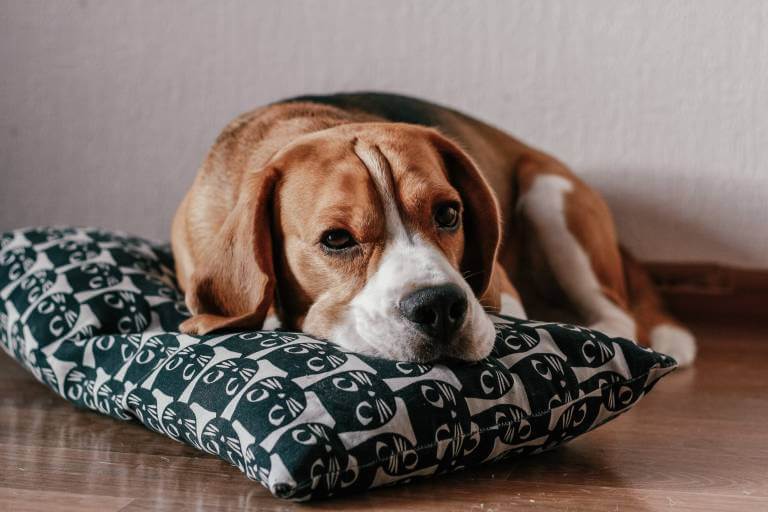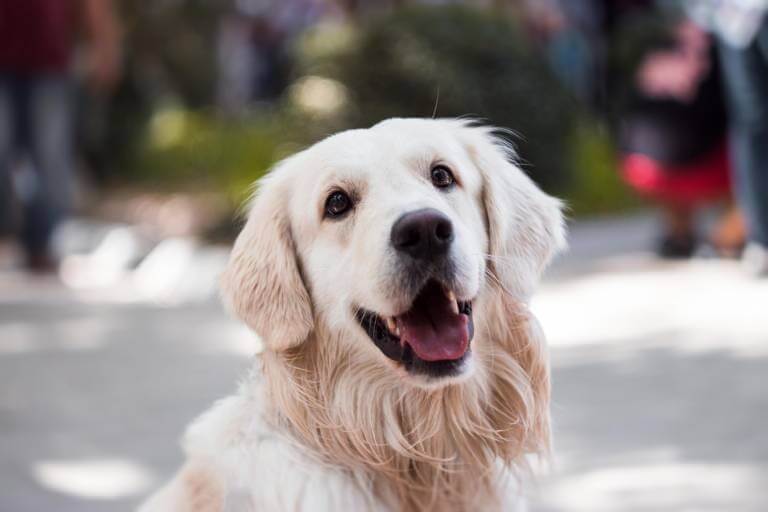How To Discipline A Dog After Fighting?
Post Date:
December 10, 2024
(Date Last Modified: November 13, 2025)
After a dog fight, immediate steps focus on physical safety and calming the scene so animals and people are no longer at risk. The following sections cover practical actions for separation, medical assessment, behavior evaluation, and long-term prevention.
Immediate Safety and Separation
Secure people first: remove children and bystanders from the area and keep them supervised away from the dogs. Where possible, use barriers such as doors, baby gates, or a closed crate to separate animals and prevent a second contact.
Keep the dogs at least 6 ft (1.8 m) apart behind physical barriers while you assess the situation [1]. When you must handle a dog directly, control it with a 4–6 ft (1.2–1.8 m) leash or slip lead and avoid placing hands near the head or mouth [2].
If a dog is still actively aggressive and cannot be safely contained, call local emergency animal services or animal control; do not attempt prolonged physical separation alone. When a person is bitten, ensure the wound is secured and seek medical attention per local guidance [2].
Assessing Injuries and Medical Care
Perform a calm visual check from a safe distance and then a closer exam once dogs are secured. Puncture wounds often look small but can track under the skin and become infected; they may extend 4 cm (1.6 in) or more beneath the surface [3].
Check for signs of shock such as pale gums, rapid breathing, or collapse; if present, this is an emergency. Initial at-home first aid includes applying direct pressure to severe bleeding with clean cloths, keeping the injured animal warm, and avoiding giving oral medications unless directed by a veterinarian [3].
| Sign | What it may mean | Immediate action | Urgency |
|---|---|---|---|
| Severe, spurting bleeding | Arterial or major vessel injury | Apply direct pressure and transport to clinic | High |
| Difficulty breathing | Airway compromise or thoracic injury | Keep upright and emergency transport | High |
| Collapse or very weak pulse | Shock or major internal injury | Warm, keep quiet, urgent vet care | High |
| Puncture wounds with swelling | Deep tissue injury and infection risk | Clean, cover, prompt vet evaluation | Medium |
If a veterinarian suspects shock or significant fluid loss, initial intravenous fluid therapy is commonly provided at rates in the range of 60–90 mL/kg/day adjusted to the animal’s needs and clinical status [4]. Keep records of wound locations, photographs, and timing to bring to the clinic for follow-up care and possible antibiotic or surgical needs [3].
Understanding Causes and Triggers
Identifying why a fight happened is critical for preventing recurrence. Common triggers include resource guarding, fear responses, territorial reactions, and redirected aggression when a dog is aroused by a third stimulus [5].
Medical issues or hormonal changes can increase irritability or reduce tolerance; therefore, rule out pain, illness, or endocrine disorders with a veterinary exam before concluding a behavioral origin [3]. Collect contextual details such as the presence of food or toys, location, the dogs’ prior interactions, and if any dogs were intact, as intact status can sometimes influence interdog aggression patterns [5].
Managing Stress and Emotional Recovery
After separation and medical stabilization, give each dog a quiet, safe space to rest without forced interaction. Allow 24–48 hours of calm, predictable routines before any structured behavior work begins [1].
Avoid scolding, physical punishment, or any action that increases stress, as those approaches commonly worsen fear and reactivity. Instead, provide low-level enrichment like food-dispensing toys and brief, positive interactions at a distance to rebuild confidence [5].
Behavior Evaluation and Professional Help
Seek a qualified professional when you observe repeated aggression, when injuries are severe, or when safety cannot be maintained. A veterinary behaviorist or a certified trainer with experience in aggression cases can offer assessment and an intervention plan [2].
Professionals commonly request 2–4 weeks of detailed logs covering contexts, triggers, duration, and body language before an in-depth consultation, so start collecting records immediately after the incident [5]. Bring medical records, vaccination history, and any photos or videos of the event to appointments to help rule out medical causes [3].
Implementing a Structured Rehabilitation Plan
Design clear, measurable goals (for example, calm proximity at 10 ft / 3 m for 5 minutes) and track baseline behavior to measure progress. Rehabilitation typically follows a gradual desensitization and counterconditioning approach where exposure intensity and proximity are increased slowly while pairing with positive outcomes [5].
Controlled reintroductions generally occur over days to weeks depending on the dogs’ histories and responses; expect conservative timelines rather than rapid reunions to avoid relapse [4]. Use management tools such as crates, gates, and parallel walks to allow safe, controlled proximity while building tolerance [1].
Training Techniques to Reduce Aggression Risk
Base training on positive reinforcement to teach alternative behaviors such as sit, leave-it, and reliable recall; these skills give owners tools to interrupt escalation and redirect attention [5].
Include impulse-control exercises like waiting for food or longer sits before access to a preferred object; structured practice of these exercises for short sessions several times a day helps generalize self-control across contexts [5]. Avoid punishment-based or dominance approaches because they can increase fear and escalate aggression risks [2].
Environmental Management and Prevention Strategies
Change the environment to reduce opportunities for conflict and make desired behaviors easier to achieve. Effective measures include separate feeding and resting areas, removal of high-value items during shared time, and consistent supervised interactions [1].
- Feed dogs in separate rooms or crates and remove toys during regrouping periods to reduce resource guarding.
- Use baby gates, crates, and tethering to maintain safe distance during recovery and training.
- Schedule predictable walks and interactions so each dog has consistent outlets for exercise and mental stimulation.
Managing Multi-Dog Households Long-Term
Monitor play and body language over time; look for subtle signs like stiffening, pinned ears, or hard stares and intervene before escalation. Regularly rotate interactions and provide parallel enrichment to avoid direct competition for resources [5].
Create a written household protocol that documents feeding routines, walking plans, and a step-by-step emergency separation plan so all caregivers know how to respond quickly and consistently [2]. If persistent severe aggression continues despite intervention, consider rehoming options or separation as a welfare-based decision.
Legal, Insurance, and Safety Considerations
Be aware of local reporting requirements for dog bites and attacks; some jurisdictions require owners to report incidents within 24–72 hours or to a specific municipal office [2]. Keep thorough documentation of injuries, veterinary bills, witness statements, and photographs to support any necessary reporting or insurance claims [3].
Contact your homeowner or renter insurance provider to review liability coverage and any required safety measures to maintain coverage after a serious incident [2]. Develop a written, practiced emergency plan that assigns roles, lists local emergency veterinary clinics, and identifies contacts for animal control or behavior professionals [4].
Structured timeline and checkpoints for rehabilitation
Begin with a conservative, staged timeline and use objective checkpoints to decide when to progress. A typical plan might start with 1–2 weeks of strict separation and low-arousal care, followed by 2–4 weeks of parallel management and short, controlled distance exposures, and then 2–6 additional weeks of graduated proximity work depending on progress [5].
Use short sessions of 3–10 minutes for formal training work and repeat them 2–4 times per day to build tolerance without over-arousal [5]. If signs of stress return (e.g., lip lift, freeze, hard stare), step back one stage and maintain the previous level for an additional 7–14 days before attempting to advance [5].
Medications and adjunctive clinical support
When a veterinary behaviorist determines medication is appropriate, common options include anxiolytics and serotonergic agents that typically require 4–6 weeks to show measurable behavioral improvement and often need 6–12 months of continued use while behavior modification proceeds [3].
Short-term sedatives or fast-acting anxiolytics may be used to assist with specific triggers (such as veterinary visits or controlled reintroductions) but should be administered under veterinary direction and dosing guidance [4]. For animals with wounds or systemic concerns, veterinarians may order diagnostics and initiate antibiotics or analgesics; follow-up rechecks are commonly scheduled at 48–72 hours post-treatment to reassess infection and pain control [3].
Progress monitoring and measurable goals
Set clear, measurable goals such as reducing distance between dogs by 1–2 ft (30–60 cm) every 7–10 days while maintaining calm body language for 5 consecutive sessions at each distance before moving closer [5]. Track progress with a simple log that records date, duration, distance, context, and stress signals; expect small incremental gains rather than linear improvement.
If incidents occur, record the time, antecedents, and exact behaviors; a pattern of repeat incidents (for example, 2 or more similar escalations within 30 days) is a signal to pause progression and seek a specialist review [2].
Sample emergency contact and documentation template
Prepare a one-page emergency sheet that lists 2–3 local emergency clinics, your regular veterinarian, a veterinary behaviorist or certified trainer, and animal control with phone numbers. Include the nearest clinic open hours and whether they accept walk-ins; note at least one option within a 20–40 mile (32–64 km) radius if possible [2].
For each incident, keep dated veterinary invoices, photographs, and a written timeline; retain these records for at least 3 years in case of insurance or legal inquiries [2]. Store digital copies in a secure cloud folder and keep a printed copy with your emergency sheet.
When rehoming or separation should be considered
Consider rehoming, permanent separation, or other welfare-focused decisions when repeated severe incidents continue despite well-documented management, at least 8–12 weeks of consistent behavior modification, and professional input that indicates low likelihood of safe long-term coexistence [5]. Welfare and safety for all household members, including humans, must guide these decisions.
Owner safety training and role assignment
Train all household members in safe responses: designate one adult to manage separation tools, another to handle records and communication with professionals, and one to supervise children and visitors. Practice the emergency separation plan twice monthly so responses become automatic and safe [1].
Provide clear, written rules for interactions (for example, no unsupervised food sharing, no free access to valued toys during recovery) and review them with all caregivers to maintain consistency; inconsistent responses increase relapse risk [5].
Long-term maintenance and relapse prevention
Even after measurable improvement, continue management measures such as separate feeding areas and supervised high-value item access; many households maintain partial management permanently to minimize risk. A practical maintenance schedule might include monthly behavior check-ins and a formal reassessment with a professional every 6–12 months during the first two years post-incident [5].
Be vigilant during life changes (new dog, moving house, changes in health status) because such events can increase stress and trigger regressions; proactively consult your behaviorist if reactivity returns or new risk factors emerge [2].
Consistent safety management, timely veterinary care, clear documentation, and stepwise behavior change guided by qualified professionals are the foundations for reducing recurrence and protecting welfare after a serious dog fight.
Sources
- merckvetmanual.com — veterinary






